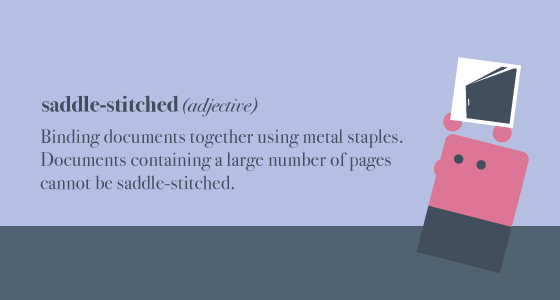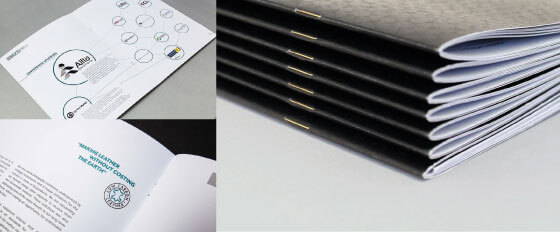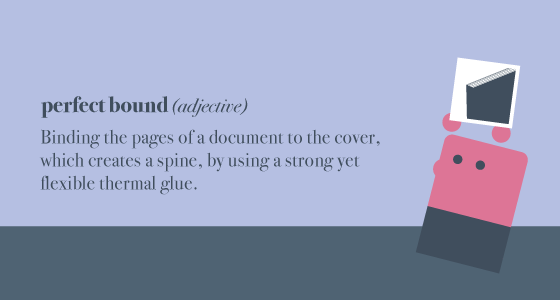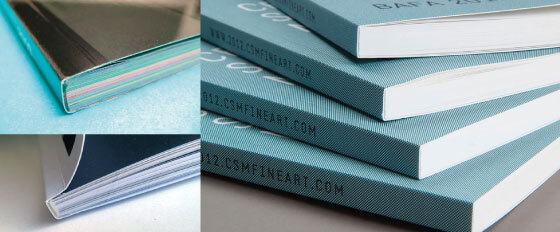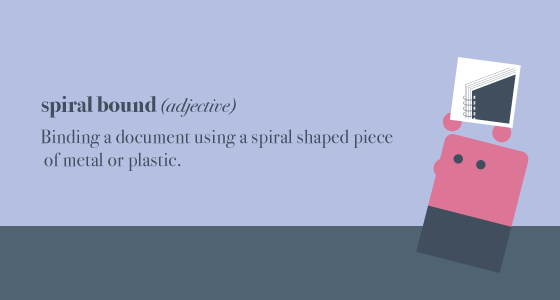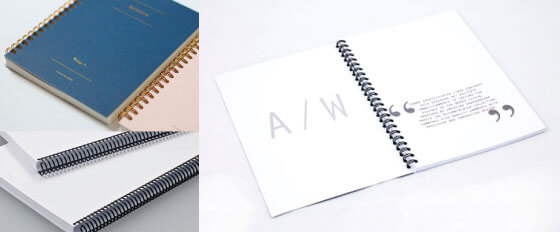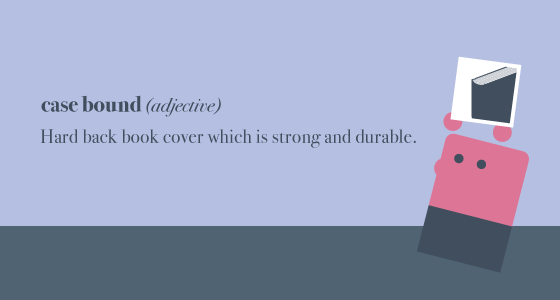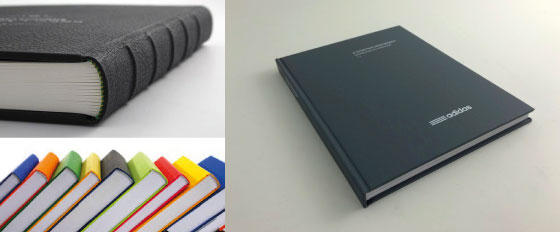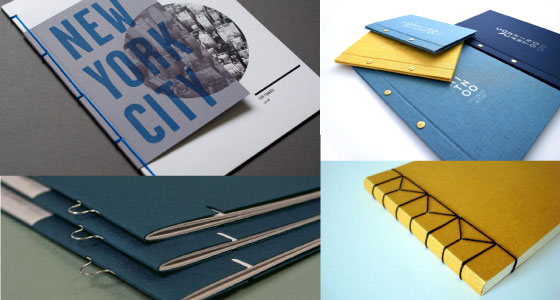Baffled by design terms? Pulling your hair out trying to decipher this secret language your designer is using? Not to worry, help is here. Every week, we will be compiling some of our most frequently used design terms and putting them into more digestible terms. Starting off with the thing that holds it all together — Binding:
Binding refers to the process of combining all the printed, individual sheets together to form a finished book/brochure. Depending on the type of document you are making, the number of pages the document and/or the finish you are looking to achieve all will help to determine the type of binding you will need to use.
Saddle-stitched
Fast, inexpensive and widely available, saddle stitching is one of the most commonly used types of binding. Printed, folded spreads are bound together by stapling them down the fold. This binding is perfect for magazines, reports, brochures and catalogues. However, it can only be used in documents with a low page count in order to maintain the bindings longevity. Here are some examples of saddle-stitched binding in action:
Perfect Bound
The perfect finish for your document. Perfect bound, while more expensive, offers a high-quality finish to any document. Creating a spine that can be printed, this form of binding binds the cover to the inside pages using a strong yet flexible thermal glue. Best for reports, brochures, magazines, paperback books and catalogues that have a high page count. However, if perfect bound is the finish you are looking for, make sure to leave an extra day or two for binding. Here are some examples of perfect bound binding:
Spiral Bound
Need your document to lie flat? Then this is the binding for you. Spiral bound is the most adaptive of bindings, it can be used for low or high page counts and is readily available. Printed pages are bound together using a spiral-shaped piece of metal or plastic which allows the pages to open freely and allows for the document to remain open with ease. Best for binding reports, sales presentations, proposals, directories, cookbooks, instructional books and maintenance manuals. Here are some examples of spiral bound binding in action:
Case Bound
Case bound, also known as hard back, is a form of binding that most people will be familiar with. Case bound books are built to last which makes them the ideal candidate for commemorative books, fiction/non-fiction books. This is the most expensive and timely option but if you are looking for strength and longevity, then this is the perfect binding solution. Here are some examples of case binding:
Of course, there are other, more bespoke, types of binding which can help to add a little bit of extra personality to your document. From stab stitching which can add a decorative, handcrafted feel to screw post binding and loop stitched binding which are great alternatives to standard binding techniques.
Next week, we will be deciphering the wonderful world of type.
Laura, Designer & Director of Noise
Miss Noisy! The team’s very own socialite and one who masters every situation she finds herself. Laura is the lady for every occasion. She has a formidable array of skills as a creative, diplomat, agony aunt, blogger, Tweeter, art-director, team player and our own favourite — noisemaker. A more perfect dinner companion, you will be hard-pressed to find.
